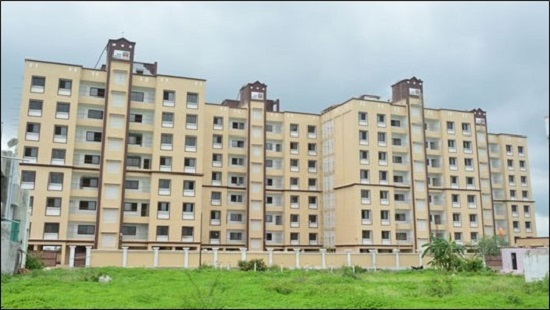
MHADA and NMC: A Vision for Transforming Nashik's Housing Landscape
Affordable housing remains one of the most pressing issues facing urban India today. Yet, amidst the complexity of urbanization, government agencies often face significant barriers in land acquisition and resource allocation. The partnership between the Maharashtra Housing and Area Development Authority (MHADA) and Nashik Municipal Corporation (NMC) is a refreshing example of how governance can innovate to turn these challenges into opportunities—ultimately transforming Nashik's housing landscape.
Rethinking Urban Development: A New Model of Collaboration
Urban growth often presents governments with a stark dichotomy: the need for rapid development while ensuring that the most vulnerable populations are not left behind. In Nashik, MHADA and NMC have embraced this challenge with a collaborative strategy that focuses on sustainable urban development. The integration of Development Rights Transfer (TDR) into the affordable housing sector marks a turning point in how cities can achieve inclusive growth.
This joint venture, focused on land transfer, isn’t just a technical solution—it’s a philosophical shift in how public-private partnerships should operate. By requiring builders developing plots over 4,000 square meters to allocate 20% of land for affordable housing, this agreement ensures that urban expansion doesn’t happen at the expense of the poor. It turns private development into a shared responsibility, where developers contribute to the public good, and in return, MHADA compensates them with TDRs.
This creative solution speaks volumes about governance that is forward-thinking and dynamic. It uses the tools available, not just to build homes, but to forge a stronger, more equitable society.
Unlocking Potential: Addressing Long-standing Land Issues
One of the most compelling aspects of this partnership is the attention given to 88 plots that had been reserved since 2013 for affordable housing but had remained dormant due to bureaucratic gridlocks. In a swift and decisive move, these plots are now being transferred to MHADA. This resolution is more than just an administrative fix—it’s a demonstration of accountability, where promises made by the government are finally being fulfilled.
This shift reflects an essential lesson in public policy: the effectiveness of governance lies in execution. It is easy for long-term plans to remain trapped in red tape, but the MHADA-NMC collaboration provides an important case study of how, with the right alignment of leadership and purpose, long-standing issues can be resolved.
The Ripple Effect: Empowering Communities through Ownership
But this partnership isn't just about clearing backlogs; it's about creating lasting change. MHADA’s new initiative to promote cooperative societies among housing residents reflects a broader vision of community empowerment. By allowing residents to form societies, MHADA ensures that the ownership of these homes isn’t just on paper. Residents gain real agency, empowering them to engage in property transactions, protect their legacy, and even partake in redevelopment processes in the future.
This is the kind of social transformation that has the potential to redefine how we look at housing. Rather than simply creating shelters, this initiative creates connected communities, where people have a stake in their future, contributing to social cohesion and stability.
A Blueprint for Sustainable and Inclusive Urban Development
At its core, the MHADA-NMC collaboration sets a benchmark for future urban development. In a country where millions live in overcrowded, informal settlements, this partnership presents an ideal model for addressing housing needs. The combination of innovative land transfer policies, community participation, and sustainable growth will ensure that Nashik, a city once known for its agricultural roots, transforms into a model of modern urban living.
This is not just about bricks and mortar. It’s about creating a framework for inclusive growth, where every citizen, regardless of income, can live with dignity and opportunity. MHADA and NMC have demonstrated that urban planning and social equity can coexist, setting a powerful example for other cities grappling with similar challenges.
Conclusion: Transforming Challenges into Long-term Solutions
As India faces an unprecedented urbanization wave, we must look beyond short-term fixes and instead focus on long-term, sustainable solutions. The work being done by IAS Sanjeev Jaiswal, through his leadership at MHADA, exemplifies this broader vision. His focus on efficient governance, collaborative partnerships, and community-centered development is a model for cities across the country to emulate.
The future of urban India depends on creating cities that are not just physically expanded but are inclusive, fair, and empowering. The collaboration between MHADA and NMC in Nashik is proof that with the right vision, leadership, and innovative thinking, urban challenges can be transformed into opportunities that benefit all of society.

